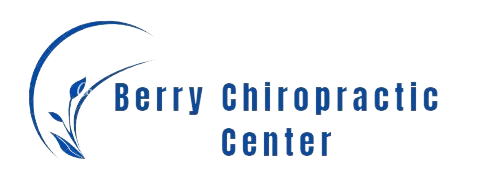Chiropractic care offers diverse techniques, each with unique approaches and benefits. Techniques include the Diversified Technique, Gonstead Adjustment, and Thompson Drop-Table Method. Identifying the superior technique requires further exploration of their efficacy in treating musculoskeletal conditions. Each technique’s effectiveness can vary depending on the patient’s condition, making it challenging to determine the best. The investigation of chiropractic methods and their efficacy is essential for optimal patient outcomes.
Understanding Chiropractic Techniques
Chiropractic techniques are non-invasive healthcare interventions focused on restoring physical function and alleviating discomfort by addressing structural spine issues. They have evolved over centuries, with a unique, holistic approach to health that connects the spine and nervous system. The effectiveness of these techniques depends on the practitioner’s skill, the patient’s condition, and the chosen method. Techniques may include spinal manipulation, joint mobilization, soft tissue therapies, and therapeutic exercises. Patient assessment factors including age, physical condition, medical history, and symptoms guide the choice of technique. Research confirms chiropractic techniques’ effectiveness in managing musculoskeletal conditions, reducing pain, improving mobility, and enhancing life quality. Success depends on correct application and patient compliance with therapeutic exercises and lifestyle changes. Patient education is crucial for optimal outcomes of chiropractic interventions. To learn more about how chiropractic works, visit our page on What Is Chiropractic.
The Diversified Technique
The Diversified Technique, a vital chiropractic method, employs precise high-velocity, low-amplitude thrusts for spine alignment and movement restoration. This technique has its roots in chiropractic practice foundation, with ongoing refinement enhancing its efficacy and reliability.
Key characteristics of the Diversified Technique include a holistic spine health approach, patient-specific adaptability, and precise manual adjustments. It prioritizes alignment restoration and the use of high-velocity, low-amplitude thrusts.
Technological advancements and research continuously refine and enhance the Diversified Technique. Utilization of data-driven methods for problem area identification and specialized tool development expectedly increases its therapeutic impact.
The Diversified Technique, with its holistic and scientific approach, addresses diverse musculoskeletal issues effectively. It holds a significant position in the growing interest for non-invasive, holistic healthcare solutions.
Benefits of the Gonstead Adjustment
The Gonstead Adjustment, a prominent chiropractic technique, provides significant health benefits. Its principles, health impacts, and clinical applications contribute to its role in successful chiropractic treatments, making it a crucial chiropractic care approach. Its clear understanding enhances the efficacy of chiropractic treatments.
Understanding Gonstead Adjustment
Gonstead Adjustment, a unique chiropractic technique, offers significant benefits. Originated in the mid-20th century by Dr. Clarence S. Gonstead, a mechanical engineer-turned-chiropractor, this method is known for precision and efficacy. Patients frequently report enhanced outcomes and less discomfort post-adjustment. Key features of Gonstead Adjustment include precise problem area identification, immediate results, patient comfort, treatment versatility, and reduced injury risk.
Health Effects of Gonstead
The Gonstead Adjustment, a technique dating back to the early 20th century, offers significant health benefits including pain reduction, mobility improvement, and overall well-being enhancement. Its precision and specificity target spinal misalignment directly, providing long-term relief rather than temporary symptom alleviation. The method also promotes optimal nervous system function, benefiting various health aspects like digestion and immune response.
Gonstead Technique In Practice
The Gonstead Technique, a chiropractic method rooted in its historical background, yields significant benefits, particularly in addressing spinal issues and promoting overall health. This technique’s effectiveness resides in its precision adjustments based on comprehensive analysis of the patient’s spinal alignment.
Key focus areas of the Gonstead Technique include:
- Identifying the primary source of pain rather than simply treating symptoms,
- Enhancing body’s innate healing ability through restoration of spinal health,
- Augmenting mobility and flexibility via precise adjustments,
- Forestalling future health concerns by ensuring proper spinal alignment,
- Promoting overall wellness via comprehensive chiropractic care.
This method’s unique blend of historical knowledge, scientific comprehension, and practical application has proven vital in providing relief and enhancing health.
The Thompson Drop-Table Method
The Thompson Technique, a prevalent chiropractic adjustment method, employs a unique drop-table. This table, featuring sections that lower slightly during adjustments, enhances spinal manipulation’s precision and effectiveness. The method, characterized by its reduced adjustment force, offers significant patient benefits, discussed in the following section.
Understanding Thompson Technique
The Thompson Technique, a precise and gentle chiropractic method, was developed by Dr. J. Clay Thompson in the 1950s. This technique utilizes a specialized table with drop pieces for precision. The method identifies and rectifies vertebral subluxations, relying on detailed analysis of leg lengths. It applies a high-speed, low-force thrust, ensuring patient comfort. The technique’s continuous refinement over the years signifies its evolution. Today, it remains a crucial, versatile, and effective approach in chiropractic care, continually influencing the field.
Benefits of Drop-Table Method
The Drop-Table Method, inspired by the Thompson Technique, offers significant benefits in chiropractic care. Its effectiveness lies in precise, efficient spinal adjustments enhancing nerve function and overall health. The technique, using a specialized segmented table, ensures patient comfort and minimal pressure during adjustments. It is ideal for those apprehensive about manual adjustments. The method often provides immediate symptom relief and improved mobility, making it popular in the chiropractic community.
The Activator Method Explained
The Activator Method is a scientifically-supported chiropractic technique using a handheld device for precise adjustments. It is popular due to its controlled, quick thrusts, making it less forceful yet effective compared to manual techniques. It treats conditions such as back pain, neck pain, migraines, and chronic disorders like arthritis.
The method involves detecting spinal joint dysfunction through a unique analysis system, followed by applying the Activator device to deliver low-force impulses. Key features include:
- Consistent, reproducible, and controlled force from the Activator device.
- High precision targeting specific spine areas.
- Gentle, non-invasive approach suitable for all ages.
- Clinical research supporting its effectiveness.
- Immediate feedback on the treated joint’s mobility.
The Flexion-Distraction Technique
The Flexion-Distraction Technique, a critical chiropractic approach, specifically targets spinal conditions. Understanding its mechanics and uses elucidates its potential benefits. The focus here is on the technique’s basic principles and patient advantages in chiropractic care.
Understanding Flexion-Distraction
Flexion-distraction, a non-thrusting gentle chiropractic technique, enhances spinal mobility and mitigates pain, predominantly in the lower back and neck. The non-invasive nature eliminates the need for surgery or medication. It’s applicable to diverse spinal conditions, aiming to reinstate the patient’s inherent range of motion. By alleviating spinal nerve pressure, it can offer an alternative for those ineligible for aggressive treatments. However, it’s imperative to evaluate inherent flexion-distraction risks. Patient experiences indicate its effective reception. Subsequently, we delve into detailed benefits of this technique.
Benefits of This Technique
The Flexion-Distraction Technique offers notable health benefits in the chiropractic field. It is particularly effective in reducing pain and enhancing mobility for patients with herniated discs, scoliosis, and other back conditions. This technique employs a specialized table to gently stretch the spine, enabling chiropractors to isolate and treat specific areas.
Despite some chiropractic debates, the Flexion-Distraction Technique is widely recognized and accepted due to its non-invasive nature and the absence of surgical risks. It is a low-force method, mitigating the discomfort usually linked with high-velocity manipulations. The technique’s efficacy and safety validate its value in the chiropractic domain.
Graston Technique: A Closer Look
The Graston Technique, an innovative chiropractic method using specialized stainless-steel tools, effectively addresses scar tissue and muscle adhesions. Studies highlight its significant benefits for varied musculoskeletal disorders, unlike acupuncture which targets energy pathways. Key points about this technique include:
- Graston Technique identifies and treats scar tissue and muscle adhesions.
- It is effective in managing chronic inflammation and post-surgical scars.
- Conditions like Carpal Tunnel Syndrome, Fibromyalgia, and Tennis Elbow respond well to this technique.
- It enhances the range of motion, strength, and functionality of the treated area.
- It is an advantageous supplement to traditional therapies like physical, occupational, and massage therapy.
The Sacro-Occipital Technique
The Sacro-Occipital Technique (SOT), a chiropractic approach, focuses on the sacrum and occiput connection. Developed by Major Bertrand DeJarnette in the 1920s, SOT hypothesizes that spinal misalignment disrupts cerebrospinal fluid flow, causing health issues. SOT uses gentle manipulations to correct these imbalances, improving health and addressing conditions such as sciatica, neck pain, and migraines. However, SOT’s effectiveness varies due to individual anatomy and spinal misalignment severity. It may not suit patients with conditions like osteoporosis. Unlike the Graston Technique that targets scar tissue and muscle adhesions, SOT aims at spinal imbalances.
Logan Basic Technique Overview
The Logan Basic Technique, a key chiropractic method, focuses on the sacrum base, aiming for spine and nervous system balance. H.B. Logan, a chiropractic pioneer, developed it in the mid-20th century. The technique theorizes that spinal misalignment originates at the spine base, extending to other body parts. Targeting the sacrum, it bolsters the whole spinal system, enhancing body balance and function. Patients report varying effectiveness, with some experiencing improved spinal function and pain reduction. The technique’s features include gentleness and low-force, making it suitable for children and elderly. It aims to restore body balance, improve nervous system function, reduce spinal pain and tension. It has a long record in chiropractic care. The technique’s effectiveness differs among individuals, reflecting each patient’s unique condition.
The Palmer Chiropractic Method
The Palmer Chiropractic Method, a widely used approach, was developed by D.D. Palmer and refined by his son, B.J. Palmer. This method focuses on correcting spinal misalignments, or subluxations, to enhance nervous system health. It relies on the belief that the body’s innate intelligence governs health. Spinal subluxations, believed to interfere with this intelligence, can cause health issues. The Palmer Method corrects these subluxations through precise, hands-on adjustments to restore nerve function. Practitioners, using a range of techniques from manual adjustments to instrument-assisted therapies, aim to restore the body’s natural alignment to boost self-healing capabilities. The method’s application is tailored to individual patient’s needs.
Comparing Chiropractic Techniques
Understanding the variety of chiropractic techniques involves evaluating efficacy, history, invasiveness, patient comfort, and practitioner expertise. Not all techniques yield the same results for every condition, with some having specific efficacy and others being versatile. Chiropractic techniques, tracing back to the 19th century, have evolved over time. The level of invasiveness and force varies among techniques, with some involving high-velocity thrusts and others applying minimal force. Patient comfort and preference play a key role in technique choice, with some preferring gentle approaches and others benefiting from forceful ones. The success of a technique often hinges on the practitioner’s expertise and experience. This concise comparison aids practitioners and patients in selecting the most suitable technique.
Choosing the Right Chiropractic Technique
Choosing a chiropractic technique involves evaluating the patient’s condition, comfort, and therapeutic goals. The method’s effectiveness for the specific ailment is critical. The chiropractor uses professional judgment, backed by research and clinical experience, to determine the most suitable technique.
However, patient preferences also shape the therapeutic strategy. Factors like discomfort, cost, and treatment duration can affect patient choices. To better understand how long the benefits of chiropractic adjustments may last, it is important to consider various factors that impact the longevity of relief. Learn more about how lifestyle and injury severity can influence the effectiveness of chiropractic adjustments in this guide on how long chiropractic adjustments last. Therefore, the chiropractor involves the patient in decision-making, explaining each technique’s pros and cons for informed choice.
You May Also Like: Chiropractic Help Scoliosis
Frequently Asked Questions
Can Chiropractic Techniques Help in Managing Stress and Anxiety?
Chiropractic techniques, coupled with meditation, effectively manage stress and anxiety. This care additionally treats insomnia, thus reducing anxiety and enhancing mental well-being.
Are There Any Risks or Side Effects Associated With Chiropractic Treatments?
Chiropractic treatments, though generally safe, can induce side effects such as discomfort, headaches, fatigue. Insurance coverage for these treatments varies. Consult a healthcare professional for personalized advice.
How Frequently Should One Visit a Chiropractor for Maintaining Overall Health?
The frequency of chiropractic visits for overall health varies based on individual needs. Consideration for chiropractic costs and insurance coverage is essential when planning these visits.
Are Chiropractic Adjustments Safe for Children and the Elderly?
Chiropractic adjustments are safe for children, enhancing sleep and immune function. For the elderly, such adjustments improve balance and reduce joint pain.
Can Chiropractic Techniques Be Combined With Other Forms of Treatment Like Physiotherapy?
Yes, chiropractic techniques can merge with treatments like physiotherapy. The crucial process of technique choice ensures effective integration, boosting treatment effectiveness and patient outcomes.






